Commissioner Arts Council Korea • Artistic Directors & Curators Soik Jung Kyong Park • Secretary-General & Assistant Curator Kim Yuran • Assistant Curator Han Dabin
Artists of “Future Community”
Yehre Suh (Urban Terrains Lab) X Woon Gi, Min
Yerin Kang (Seoul National University) Lee Chi-hoon (SoA) X Zoosun Yoon (Chungnam National University, UDTT lab.) Ahram Chae (Studio UDTT)
Nahyun Hwang, David Eugin Moon (N H D M) X Wolsik Kim
Visual Artist Jaekyung Jung • Graphic Designers Chris Ro Sunhee Yang • Exhibition Designer OUR LABOUR
Press PELHAM

Soik Jung Artistic Director & Curator

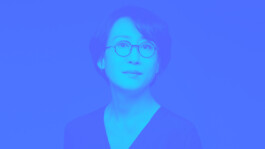
Soik Jung established the Urban Mediation Project in 2008 and has continued to conduct research, exhibitions, and educational program development as well as publishing on architecture, urbanism, public art, and social work. Since 2018, her field of research has expanded to include social welfare, and she has conducted research and projects to explore the connections and cooperation among architecture, urbanism, public art, local social work, social economy, and social responsibility.
She was the Administration Director and Associate Curator of the Anyang Public Art Project 2010 (2009–2010), Associate Curator of the Gwangju Design Biennale 2011 (2011), and Secretary General of the Seoul Biennale of Architecture and Urbanism 2017. She curated a governance project, Hanoi in the Future (2008–2009); an exhibition at Culture Station Seoul 284, Life: A User’s Manual (2012); an exhibition at the Seoul Museum of Art NamSeoul, Architecture for All (2020); and a public art project, Smaller, Slower, Closer (2020–2021). She also programmed and published the disability art education program Outwardly, By Themselves, Expressing (2019) and conducted a study linking community regeneration with social welfare, “Saeddeul Village Welfare Community Building Manual” (2021). She holds PhDs in urbanism and social welfare.

Kyong Park Artistic Director & Curator

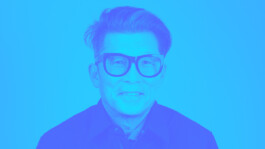
Kyong Park is professor at the Department of Visual Arts at the University of California, San Diego (since 2007) and was the founding director of StoreFront for Art and Architecture in New York (1982–1998), the International Center for Urban Ecology in Detroit (1998–2001), and the Centrala Foundation for Future Cities in Rotterdam (2005–2006).
He was a curator of Gwangju Biennale (1997) and the Artistic Director and Chief Curator of the Anyang Public Art Project 2010 (2009–2010) in Korea. His solo exhibitions include Kyong Park: New Silk Road at the Museo de Arte Contemporàneo de Castilla y León in Spain (2009–2010) and Imagining New Eurasia, a sequence of three research art exhibitions that was commissioned and exhibited at the Asia Culture Center in Gwangju, South Korea (2015–2018).
His current project is a series of collaborations under collectives called CiViChon, with the exhibition City in a Village at Vienna Biennale for Change (2021), and CiViChon 2.0, with the exhibition Nomadic Forums for Future Communities at the Ob/Scene Festival in South Korea (2022).

Yuran Kim Secretary-General & Assistant Curator

Kim Yuran holds a Master’s degree in cultural studies from the Graduate School at Goldsmiths, University of London and a Bachelor’s degree in fine art from Korea University. She has organized several exhibitions, published books, and made artistic programs and has interests in various media and boundaries operating in contemporary art. Starting with an internship at the Daelim Museum, she worked as an exhibition coordinator at the Seoul Museum of Art and the National Museum of Modern and Contemporary Art and as a curator at Boan1942. She has also worked as an independent curator and cultural researcher.
She has participated in exhibitions such as MMCA Lee Kun-hee Collection: Monet, Picasso, and the Masters of the Belle Epoque (2022), Playing Society (2022), Time of the Earth (2021), Switch Things Up (2021), Hybridity Made in Busan (2020), Tigersprung (2019), and others.

Dabin Han Assistant Curator

Han Dabin graduated from the School of Architecture, Soongsil University, and is continuing her study of history of modern Korean architecture at the graduate school of the same. She likes to collect and record and is interested in expanding her findings to various platforms and introducing them widely to the public.
Recently, she participated as an assistant curator for the CiViChon 2.0 exhibition Nomadic Forums for Future Communities (2022) and codirected the online exhibition Versus (2018) at the architecture research group Chck_Chck_. Her architecture-related books include the architectural infographic series City Universe: Design Competition for Nodeul Island (2019, coauthor) and First Meeting (2019). She also participated as an artist at Seoul Publisher’s Table (2019, 2020).

Yehre Suh (Urban Terrains Lab)

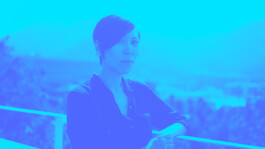
Yehre Suh is an architect based in Seoul and New York City. She was the Assistant Professor of Urban Design at Seoul National University Graduate School of Environmental Studies from 2014 to 2019 and is currently a Visiting Associate Professor at the Pratt Institute School of Architecture. She founded Urban Terrains Lab in 2012 as a multidisciplinary practice and research lab focusing on diverse scales and modes of spatial agency through architecture, landscape, and urbanism.
Her main projects include the Wing House, the Suseo 1 Public Housing Complex “Gangnam Commons,” and the Maehyangli Ecological Peace Park Master Plan. She participated in an exhibition at the 2017 Seoul Biennale of Architecture and Urbanism Nabi Art Center and the exhibition Crow’s Eye View at the 2014 Venice Architecture Biennale Korean Pavilion, the latter of which won the Golden Lion award. From 2015 to 2016, she was the Urbanism Curator at the Asia Culture Center in Gwangju. Her study “North and South Korea’s Parallel Urbanisms,” which received grants from the Graham Foundation, Cornell Arts Council, Rotch Foundation, ARKO, and SNU Research Foundation, is currently being prepared for publication.

Woon Gi, Min


Because he believes that the social and regional roles of art are important, WoonGi Min set up Space Beam, an alternative cultural space that opened in 2002, holding various exhibitions, publishing critical magazines, and planning and conducting public art projects and educational programs.
Currently, in order to create an “open urban community Incheon” based in Baedari Village, Dong-gu, Incheon, he is forming a network with various civic culture and arts organizations and activists.
Though he artistic activities in specific situations and contexts rather than in institutionalized areas, he pays much attention to finding activities and languages to achieve smooth communication and practical change.

Yerin Kang (Seoul National University)


Yerin Kang is an architect based in Seoul. Yerin Kang found design firm SoA in 2011, after practicing Hand and Hyubdongwon in Seoul and O.M.A in Rotterdam.
Her key projects include The Rabbit, Roof Sentiment, Yoonseul, Jeju Sayou: Living and Thinking in Architecture, Paju Book City Studio M, and Space So, which have been introduced in various international publications. She has participated in several exhibitions, such as the Gwangju Design Biennale (2011), the Italy MAXXI Exhibition (2012), the APMAP Jeju Exhibition (2014), and the Young Architect Award Exhibition (2015). She was in charge of curating the Producing City of the Seoul Biennale of Architecture and Urbanism.
Yerin Kang received an award from the 2015 Young Architects Project organized by the Ministry of Culture and Korea Architects Institute, MMCA, MOMA, and Hyundai Card Co., Ltd. In 2016, she was nominated for the AR Emerging Architecture 2016 Finalists. In the same year, Jeju Sayou: Living And Thinking in Architecture was awarded the Kim Swoo Geun Preview Award.
She has copublished the books Flaneure of Libraries (2012); A Tale of Three Cities (2014); Expansion City, Incheon (2015); and Apartment Letters (2016).

Lee Chi-hoon (SoA)
Lee Chi-hoon founded SoA in 2011 with Kang Yerin and Jung Young-joon. SoA analyzes the social conditions of cities and architectures and uses that information for construction projects in those environments at various scales. Based on an understanding of modern life, we believe in and pursue new possibilities for it to become richer. SoA has explored architecture as a social technology and a part of urban planning and industrial structure, and it has coordinated architecture with internal and external genres such as urban sociology, politics, geography, history, and art.
SoA designed the 2015 Young Architect Program (YAP) winning project Roof Sentiment; Yoonseul, for Seoullo 7017; and Brickwell, which won the Seoul Metropolitan Government Architecture Award. SoA won the Young Architecture Award hosted by the Ministry of Culture, Sports, and Tourism (2015); the Kim Swoo Geun Preview Award (2016); the Emerging Architecture Award (2016); and the Korea Design Award (2021).

Zoosun Yoon (Chungnam National University, UDTT lab.)

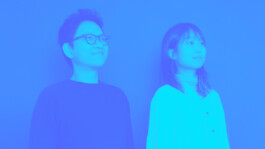
Zoosun Yoon is a professor of architecture at Chungnam National University, where he currently heads the UDTT research lab. His mission is to pursue the life of a dosearcher (= doer + researcher). He enjoys the role of a mediator. Taken literally, “Zoosun” in Korean means to act as a go-between; as such, he enjoys bringing together skilled practitioners and in enabling public–private–academic partnerships. His methodology of “DIT (do it together) urbanism” consists of integrating architectural design, construction and community building programs in order to create places that are designed by all stakeholders. This methodology has gained significance in the era of population decline and has been rolled out nationwide.
From 2015, Zoosun has focused on the city of Gunsan, where he has experimented with expanding the role of research itself from being “observatory” to “participatory.” Part of this includes projects such as establishing regional management corporations, DIT renovation programs, public–private partnerships in public facilities management, and fieldwork-focused urban regeneration education programs. A selection of his major field-oriented research projects includes the Gunsan Movie Town regeneration project, the Gunsan Community Culture Hall regeneration projects, the Gunsan DIT series, and the Anyang Indeogwon Park project.

Ahram Chae (Studio UDTT)
Ahram Chae is a writer, a mediator, an urban planner who focuses on the cultural. Currently, Ahram is director of Studio UDTT. She has been active in the social innovation scene, where she has been experimenting with how art and culture can revitalize places and communities.
Until recently, she worked as a researcher in the field of regional regeneration. Her efforts have created opportunities to connect regions and people through pop-up project planning in Gunsan, Jeollabuk-do. Since participating as a planner for the 2019 Bayreuth Climate Forest Project in Germany, she has been looking for ways in which her projects can relate to the issue of climate change. Her interests currently include tactical urbanism, transitional cities, and community design.
Ahram studied contemporary art and public art in South Korea and Germany. Previously, she has worked in various organizations as a planner and as a designer; she would observe the stories of cities that disappear and reappear, and the multitude of urban lives contained within. Outside her jobs, she is a member of the climate change research group 1.5club and a member of indie publisher Inky Friends.

Nahyun Hwang (N H D M)

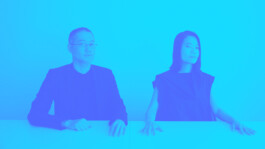
Nahyun Hwang holds a Master’s degree in Architecture from the Graduate School of Design at Harvard University and a Bachelor’s degree in Architecture from Yonsei University, Seoul, Korea. Until founding N H D M, Hwang practiced as a Senior Associate at James Corner Field Operations and as the Lead Designer (2004–2006) and Lead Project Designer (2007–2010) for the High Line Sections 1 and 2, heading a multidisciplinary team of architects, landscape architects, and others. Prior to JCFO, she practiced at Stan Allen Architects; Herzog & de Meuron; OMA; and the studio of Rafael Moneo.
Hwang is an architect and a founding partner of N H D M, a NYC-based collaborative practice for design and research in architecture and urbanism. The studio pursues an expanded practice working across disciplinary borders and in a wide range of scales and modes of output, often in a direct dialogue with the cultural, political, and economic complexities of the contemporary built environment. She is also currently an Adjunct Associate Professor at Columbia GSAPP, and her research has been supported by the Graham Foundation, the University of Michigan Muschenheim fellowship, and New York State Council of Art Independent Projects Grant, among others.
The work of N H D M has been recognized through numerous offers of support and awards, including the 2020 Architectural Record Design Vanguard Award, 2019 DOMUS’s 100+ best architecture firms, the 2018 AIANY New Practices New York award, and multiple AIANY Design Awards, and the firm’s work has been presented at global venues, including the 14th and 17th Architectural Exhibitions at the Venice Biennale, the 5th and 6th International Architecture Biennales Rotterdam, and the Storefront for Art and Architecture, among others.
David Eugin Moon (N H D M)
David Eugin Moon holds a Master’s degree in architecture from the Graduate School of Design at Harvard University and a Bachelor’s degree in Architecture from the University of Michigan. Until founding N H D M in 2010, Moon practiced in offices in the United States, Europe, and Asia and was key designer at the Office for Metropolitan Architecture in Rotterdam and New York.
Moon is an architect and a founding partner of N H D M, a NYC-based collaborative practice for design and research in architecture and urbanism. The studio pursues an expanded practice working across disciplinary borders and in a wide range of scales and modes of output, often in a direct dialogue with the cultural, political, and economic complexities of the contemporary built environment. He is also currently an Adjunct Associate Professor at Columbia GSAPP, and his research has been supported by the Graham Foundation and the New York State Council of Art Independent Projects Grant, among others.
The work of N H D M has been recognized through numerous offers of support and awards, including the 2020 Architectural Record Design Vanguard Award, 2019 DOMUS’s 100+ best architecture firms, the 2018 AIANY New Practices New York award, and multiple AIANY Design Awards, and the firm’s work has been presented at global venues, including the 14th and 17th Architectural Exhibitions at the Venice Biennale, the 5th and 6th International Architecture Biennales Rotterdam, and the Storefront for Art and Architecture, among others.

Wolsik Kim


Wolsik Kim’s work is based on the time, the generation, and the community he belongs to, expressing his interest in what has been marginalized and forgotten in modern totalitarian society.
Wolsik Kim empowers those who struggled to survive under the oppression and violence of modern Korean society, enforced by the school system and the army, through the interest he takes in the alternative cultural heritage created thereby.

Jaekyung Jung


Jaekyung Jung holds a BFA from the Rhode Island School of Design, a Master of Sciences in visual studies from MIT, and a PhD from the University of California, San Diego. He is interested in tracing ambivalence in the everyday life of the city, which stands between what is ethically right and wrong. On this basis, he founded shhh-project, a culture space focusing on time-based art research and exhibitions based in Incheon, South Korea.
His recent solo exhibitions include Cosmographia (Seoullo Media Canvas, Seoul, 2019) and A Scene (Sinchon Theater, Seoul, 2021). Recently, he has participated in group exhibitions including Art(ificial) Garden, The Border Between Us (National Museum of Modern and Contemporary Art, CheongJu, Korea, 2021); Signaling Perimeters (The Nam-Seoul Museum of Art, Seoul, Korea, 2021); and ARKIPEL (Jakarta, Indonesia, 2021), among many others. He worked as a director for the public art project Reflect (209, Dapsimni-ro, Dongdaemun-gu, Seoul, 2021–2024). His work is a part of the permanent collections of the National Museum of Modern and Contemporary Art (MMCA), the MMCA Government Art Bank, and the Seo-Seoul Museum of Art in South Korea.

Sunhee Yang (Gute Form)


Sunhee Yang is the cofounder of Gut Form, a graphic design studio founded in 2012 with Ohyun Kwon. Gut Form mainly works on branding, advertising, and editorial design. It has made design attempts not only with global companies such as Nike and Samsung but with local brands such as Magpie and Incheon Beer.
After majoring in fashion, she studied information design in London. She likes the strange mixture of the emotional and the logical. Recently, she is interested in visualizing and extracting complexity from NLP (natural language processing), data that deals with everyday language.

Chris Ro (A Dear Friend)
Chris Ro is a designer and graphic artist. His work can be characterized by its kinetic, spatial, poetic, and atmospheric properties. Born in Seattle, Chris studied architecture at the University of California at Berkeley.
After working as both an architect and a designer, he went on to study graphic design at the Rhode Island School of Design. This mixed background continues to influence his explorations, which fluctuate between two and three dimensions. He is at home when exploring concepts in motion and space and their relationship to the more static surfaces of graphic design. He recently finished research exploring concepts in Korean space at Seoul National University.
His work has been exhibited all over the world and is part of the permanent collections of the Victoria and Albert Museum, the Musée des Arts Décoratifs, Die Neue Sammlung, and the National Hangeul Museum.

OUR LABOUR
OUR LABOUR is a group of creatives from various fields, including sculpture, installation, and graphic, spatial, and flower design. Using the form of the exhibition, we aim to materialize concepts and experiment with methods of making. OUR LABOUR plays a wide range of roles, from exhibition design based on contemporary art for cultural institutions to curation and design with corporations.
Its main projects include Human, 7 questions (2021) for the Leeum Museum of Art; OUR SET: OURLABOUR X. OSANG GWON (2020), a two-person exhibition at Suwon Museum of Art; and OBJECT UNIVERSE (2022) at Ulsan Art Museum. Its main projects in collaboration with corporations include 2022 OLED ART WAVE: Never Alone (2022) with LG Display; the RE;CODE 10th anniversary exhibition Re;collective: 25 Guest Rooms with KOLON; The World We Made (2021) with PODO MUSEUM; and GOOD NIGHT: ENERGY FLASH (2019) with Hyundai Card.
Collaborators
The Game of Together How Team
OUR LABOUR, Sunhee Yang (Gute form), Kim Yuran, Han Dabin
Future Community East Incheon Team
Design: Ara Song (UTL), Haein Choi (UTL)
Art work: Naomi, Kim Soo Hwan, Beck In Tae, Oh Suk Kuhn
Future Community Gunsan Team
Exhibition Design: Hyoeun Kim (SoA), Jennifer Park (SoA)
Exhibition Research: Chae Young Lee (SoA)
Graphic Design: Mingyu Lee (SoA)
Video: TechCapsule
Sound: Sungjae Son
Photography: Studio Texture on Texture
Product: Jongbuhm Kim
DIT Workshop: Z-bang Co., Ltd.
Supported by Gunsan-Si, Commonz Field Gunsan, Ministry of the Interior and Safety
Future Community Gyeonggi province Village Team
Research, Design: Hyejin Choe (N H D M), Yoonmin Jo (N H D M), Myungju Ko (N H D M), Hyung Chul Ko (N H D M), Chaewon Kim (N H D M), Helen Ilse Adelheid Winter (N H D M)
Support for N H D M’s Migrating Futures by Graham Foundation for Advanced Studies in the Fine Arts
Video: Milan Shrestha (Wolsik Kim)
Video Editor: Youngkyun Park (Wolsik Kim)
Advisor: Sange Sherpa (Wolsik Kim)
Future Community Video Team
Production Design: Jihye Park
Music: Tae Hyung Kim (Nalsea)
Lighting Engineer, Supplier
ZAVA
Korean Pavilion Manager, Construction Supervisor
Eun Jeong Kim
Local Project Manager
Marco Scurati
Production, Installation
OUR LABOUR, FALEGNAMERIA VIANELLO di Vianello Nicola, Enrico Wiltsch (AV), Dario Sevieri (AV), Maurizio Baston, Raoul Girotto

PHEHAM
PR Oversea Materials PELHAM Communications
Handles @korean_pavilion
Hashtags #KoreanPavilion #2086TogetherHow
Partnerships
Woori Bank, ZAVA, LG Electronics, Samsung Foundation of Culture, MCM, University of California San Diego Academic Senate